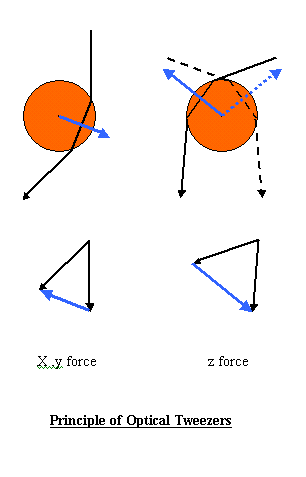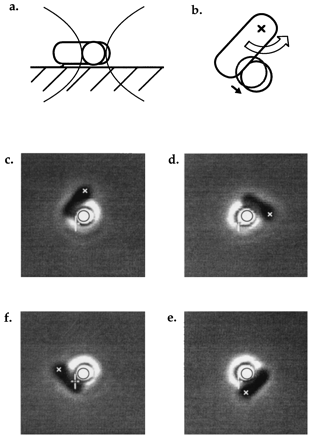|
|
Optical Tweezers, a very simple intro...
There are many excellent web-pages available on Optical tweezers. This one gives a very simple overview of the basic idea, and a simple example of how we used them once to measure the torque generated by the bacterial flagellar motor.
Light has momentum, so it can exert force on things. If a laser beam is focussed to a diffraction-limited spot in a microscope, the radiation forces can be made to trap small transparent particles in 3-D. Below left is a diagram of how it works. The black arrows are rays of light which get bent by the polystyrene sphere, exchanging momentum in the process. The blue arrows represent the momentum exchanged, and therefore the forces. X,Y forces keep the particle in the middle of the beam, while Z forces ("gradient" forces) due to rays at shallow angles keep it from running away downstream.
 |
 |
Making optical tweezers is relatively simple once you have the right microscope and laser. A rough schematic is shown above, right.
Using this system, we can push the flagellar motor around slowly using a tethered cell and a polystyrene bead as the handle. The next image shows side and top views of the experiment, and 4 actual pictures taken as the cell is moved around the trapped polystyrene bead. During the sequence c-f the motor was forced to rotate backwards once over 8 seconds, and the torque it generated while this was happening was measured using a quadrant detector, as shown above. This work was published a while ago. A more sophisticated optical trap in our lab is described here.
last updated: 23 July 2009
